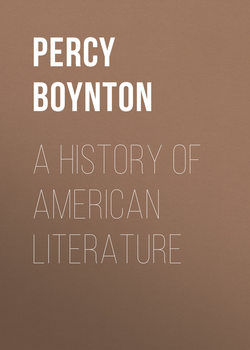Читать книгу A History of American Literature - Boynton Percy Holmes - Страница 10
CHAPTER III
THE TRANSITION TO THE EIGHTEENTH CENTURY
TOPICS AND PROBLEMS
ОглавлениеRead the introduction to the “Magnalia” or a chapter from “Illustrious Providences,” or “The Wonders of the Invisible World,” for evidence of superstition based on Scriptural authority and of vulgar, or folk, superstition.
In the Nation of August 17, 1918, pp. 173–175, there is an article in review of five new books under the title “Spirit Communication.” Establish the differences and the likenesses between the modern attitude and the attitude of the seventeenth century toward “the invisible world.”
Read Fitz-Greene Halleck’s “Connecticut,” stanzas xiii-xxvi, and Whittier’s “The Double-Headed Snake of Newbury,” ll. 71–85, as well as Irving’s “The Legend of Sleepy Hollow” (see p. 129 in this volume), for typical literary expressions of aversion to Cotton Mather.
The best method of approaching Samuel Sewall’s Diary is to read some fifty pages – preferably between 1680 and 1710 – for the references to a definite topic. This may best be selected from promising suggestions in the first few pages of reading. If none appears, look for any of the following or others like them: Sunday observance; funerals, weddings, and christenings; the pastor and his people; holidays; parents and children; self-analysis; religious discipline; law and order. Comparisons on a given topic with the entries for the same period in Evelyn or for an equal number of pages in Pepys are fruitful.
A similar approach may be made to Mrs. Knight’s compact and consecutive Journal. Her humor, irreverence, tolerance, independence, timidity, or her use of exaggeration, mock-heroics, Scriptural allusion, personal description, social analysis, are rich in their possibilities.
Read in Andrew Macphail’s “Essays in Puritanism” the essay on John Winthrop, and then the exchange of opinions between Messrs. White and Hackett in the New Republic, May 17, 1919. Do either or both throw light on the chief characters discussed in this chapter?
